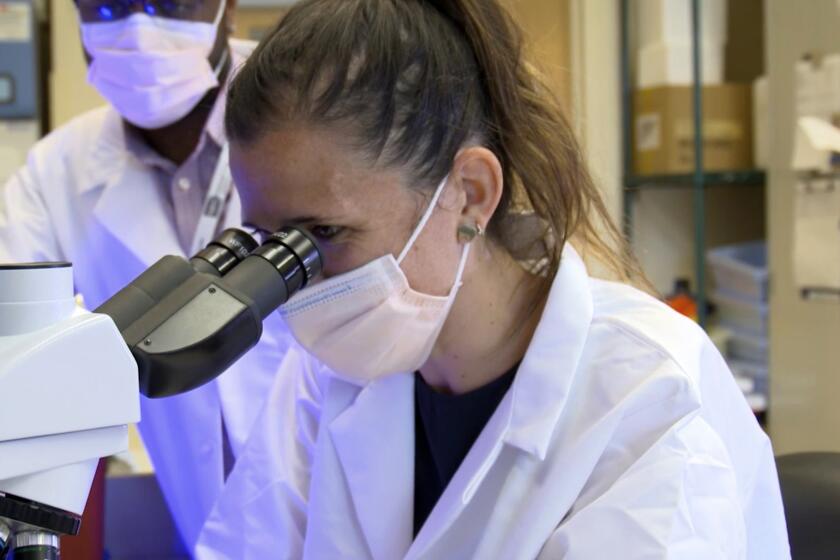With a little rubber, scientists make weird, twisted hemihelix

Using rubber strips, scientists at Harvard University have created a hemihelix, a helical structure whose spiral switches directions along the length.
- Share via
Using some plain old rubber strips, scientists have created a whole new shape -- a hemihelix, a long spiral that switches twisting directions over its length. The shape, described in the journal PLOS One, is rarely seen in nature – and could potentially prove useful for manipulating light on tiny scales.
In a standard helix the spiral coils up and up in the same direction, like a stretched-out slinky, and it’s a fairly common shape in the natural world, most notably in the double helix of DNA. But hemihelices? Not so much. They’re found infrequently in nature – Charles Darwin noted this strange phenomenon in the late 1800s, and scientists have recently described them in the climbing tendrils of cucumber vines.
Their odd structure could potentially make very useful springs, said study coauthor Katia Bertoldi, a materials scientist at Harvard University.
“Sometimes in plants you see these sorts of shapes,” Bertoldi said. “They use them basically to [distribute] the force in an advantageous way.”
The researchers were actually trying to make springs for a bio-inspired imaging project on the cuttlefish when they stumbled across the strange shape. They took one short rubber strand and stretched it to the length of a longer rubber band and then joined them to make a thicker strip. When they let the strip go, the short-but-stretched half of the strip began to contract, causing the whole length to coil – but not in the way they expected.
Instead of twirling into a helix, the strip began pulling into a hemihelix — switching directions back and forth along its length. The changes in the direction of the twist, called the chirality, were linked by a flattened zigzag stretch called a “perversion.”
“We were very surprised -- also very excited,” Bertoldi said. “That was cool.”
After that lucky break, it took two years to figure out why the rubber was curling the way it did, Bertoldi said. It has to do with the cross-section of the strips. The more flat they are, like fettuccine, the more likely they are to form a helix. The more square the cross-section is, the more likely it is to make these zigzagging hemihelices.
“There is torque and there is stretching and bending,” Bertoldi said. “It’s basically a competition between all these forces, and the magnitude of these forces is regulated by the cross-section.”
The shape, if scaled down to nano-size, could potentially be used to create tiny springs that can manipulate light, Bertoldi said – crucial for building tiny sensors and other photonics-based devices.
“This is the hope – that now that we have this interesting shape, this can then lead to interesting functionalities,” Bertoldi said.
ALSO:
If it quacks like a bio-duck, it’s a minke whale
‘Wonder material’: Scientists produce graphene in kitchen blender
Meet Kepler-186f, the most ‘Earth-like’ planet ever found
Fruit flies make blazing fast turns like fighter jets
A hunt for dark matter in a former gold mine




